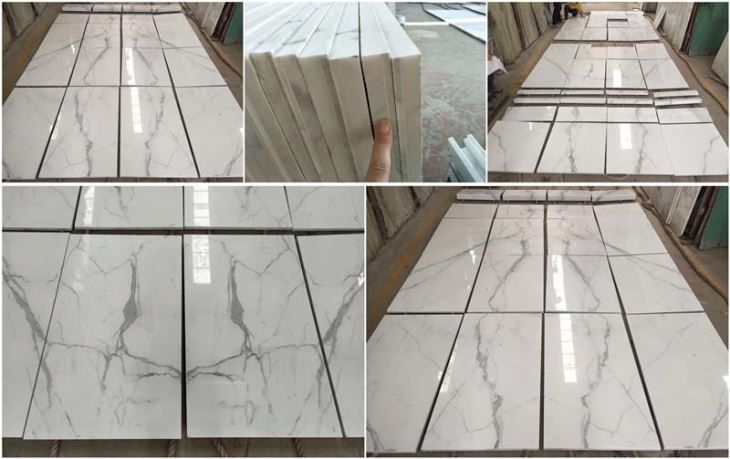1. Introduction: Calacatta Carrara is a white marble quarried in Italy that has many uses.
Calacatta is a white marble quarried in Italy that has many uses.
The marble is made by the process of calcination, a process where the stone is heated at very high temperatures. It is then lowered in water, which cools it and makes it more durable. Calcination can be done in different ways, depending on the material being quarried (limestone, granite, sandstone etc.).
Calcination was used for what would otherwise be considered trash: limestone was used in building foundations and walls. Granite was also used for boulders in caves and other places where they needed to be strong. Marble was also quarried for sculptures and other things that required a lot of strength and durability.
Nowadays, marble can be found in many architectural applications such as floors or any kind of wall – including those inside houses. The most common uses are floors because they require minimal maintenance (they are often made of wood) and have lower energy consumption than other materials such as cement or concrete. Marble floors are very durable, but they do not last as long as wood floors because they need regular maintenance due to their porous nature (wood will get wearier over time). They also absorb moisture from the air which causes water droplets to accumulate on them over time. As a result, marble tends to become yellowish-brown over time: this is an unwanted side effect but it does not affect its durability; instead it gives the floor a very elegant look with its rich coloration and natural texture.
Marble has been used for more than 2000 years by architects from all around the world; consequently there are many buildings made out of marble that were built before the industrial revolution began in 17th century Europe at which point people started using iron tools to build buildings with “stone” instead of wood or brick (iron buildings use steel beams). We see this as an important milestone because we see stone buildings as symbols of wisdom dating back thousands of years – so why wouldn’t we use them today?
2. What is calacatta nano glass?
Calacatta Nano Glass is a kind of white marble quarried in Italy and is a very popular material for interior and exterior applications. It is also great for pools, fountains, and other design projects.
3. The many uses of calacatta nano glass
Calacatta Carrara (a kind of white marble quarried in Italy) is especially good for Exterior – Interior wall and floor applications, monuments, countertops, mosaic, fountains, pool and other design projects.
This is a great summary of just about everything you need to know about calacatta nano glass. Calacatta nano glass is a kind of white marble quarried in Italy that can be used for exterior and interior walls, floors, monuments, countertops, artworks and more. That’s it.
If you need more detail on this topic you should definitely read the full post.
4. Why calacatta nano glass is so popular: Calacatta Carrara is popular because it can be used for many different things and it is a beautiful stone.
Calacatta Nano Glass is a white marble quarried in Italy. It is especially good for Exterior – Interior wall and floor applications, monuments, countertops, mosaic, fountains, pool, and other design projects.
It is a very thick glass that can be translucent or opaque depending on the light. It feels like marble because of its texture but it’s not as soft as marble or granite. Use for making tiles for floors or other projects.
5. How calacatta nano glass is made: Calacatta Carrara is quarried in Italy and then cut into the desired shape.
Calacatta nano glass is made from Calacatta Carrara marble, a white marble quarried in Italy. It is particularly good for Exterior – Interior wall and floor applications, monuments, countertops, mosaic, fountains, pool, and other design projects.
Calacatta nano glass is a kind of white marble quarried in Italy. This stone is especially good for Exterior – Interior wall and floor applications, monuments, countertops, mosaic, fountains, pool, and other design projects.
It takes about 3 months after cutting to calcata nano glass production because it needs to be thinned with water before it becomes translucent enough that you can see through it; thus if you want calacatta nano glass with a certain refractive index (the color will change slightly), you have to start thinning it with water while it is still wet until the color matches your specification (another method would be: let it dry out a little bit before thinning).
This very thinned-out calacatta nano glass gets its thickness from water + calcata nano glass = calcata nano glass thickness (+ calcata surface)
Calcata nanos are then laid on top of each other between 2 sheets of calcata nanos or between 1 sheet of calcata nanos on a sheet of




